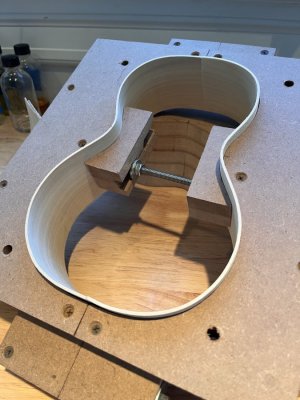sequoia
Well-known member
I said I wouldn’t be using any high quality wood for this first build. And that’s still the case. But I just scored a whole lot of mahogany for basically free. It’s an old table top that I was told was shipped to the US from the UK. Unsure of age or specific species but seems pretty nice.
Depending on the age, quite possibly (probably?) it is Cuban mahogany. At one time Cuban mahogany (Swietenia mahogani) was much more common than so-called "Honduras" mahogany (Swietenia macrophylla). Also of Cuban mahogany at one time they said there is so much we will never run out. They ran out.












